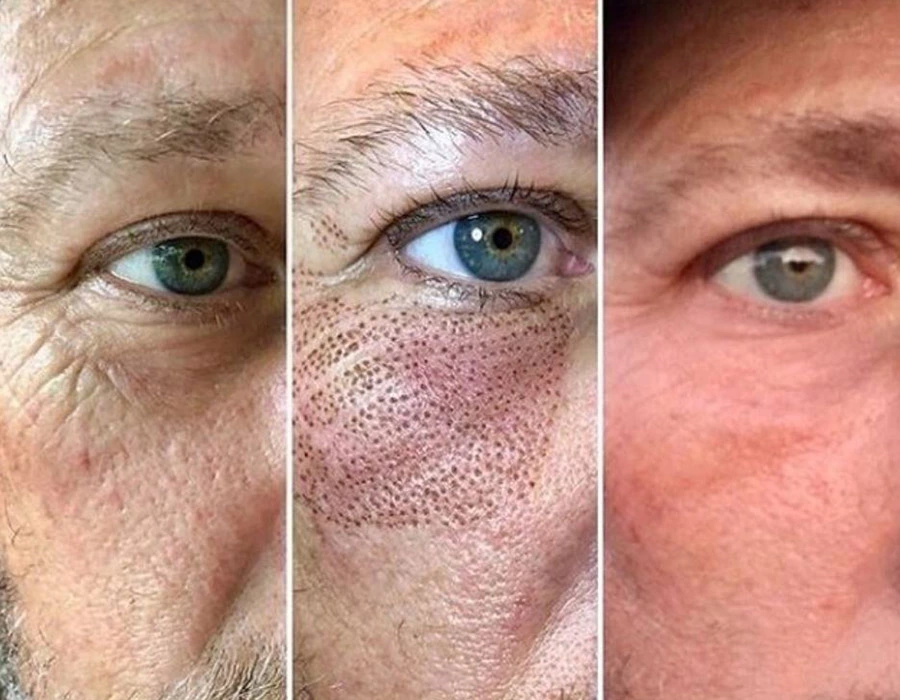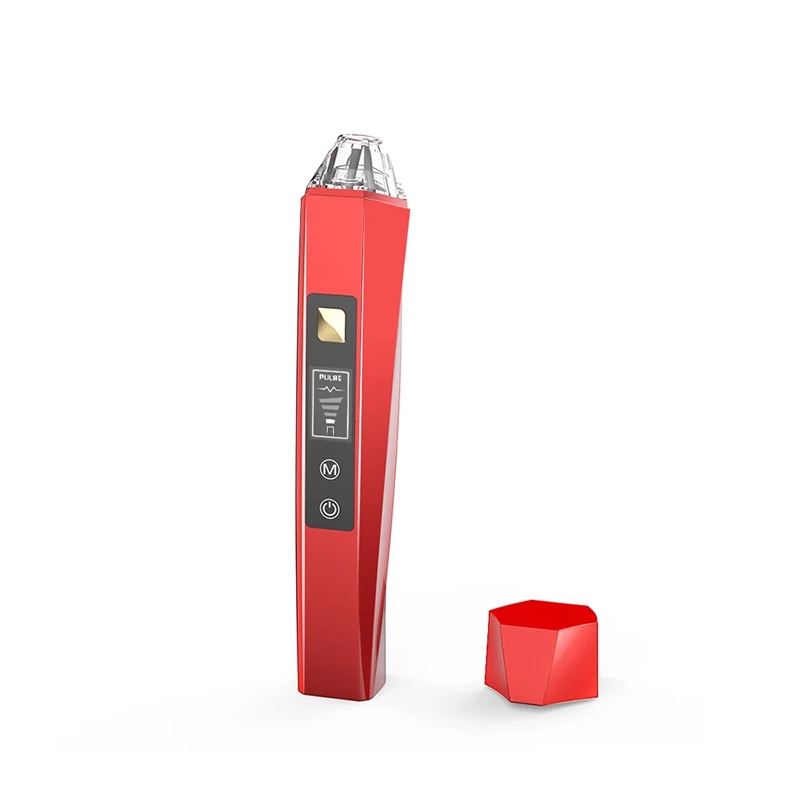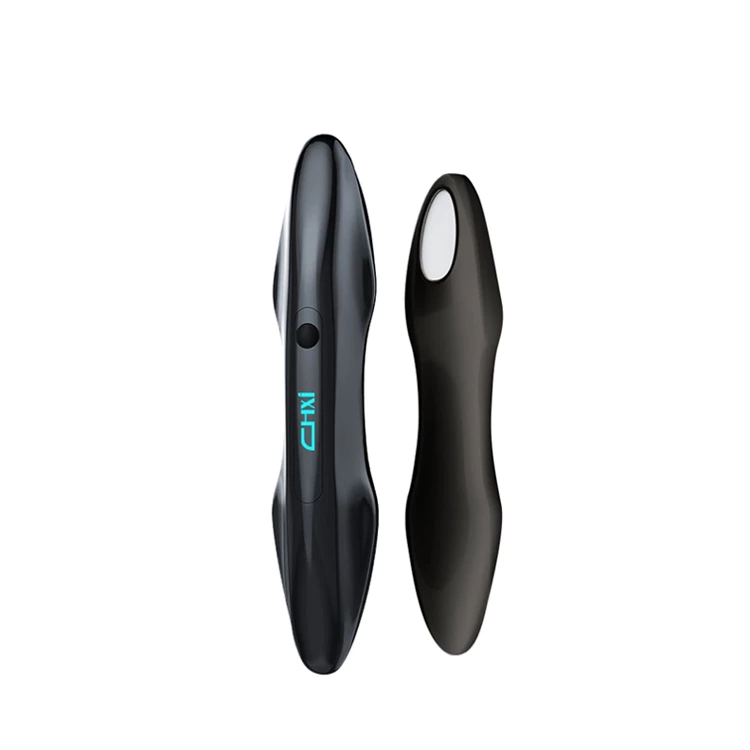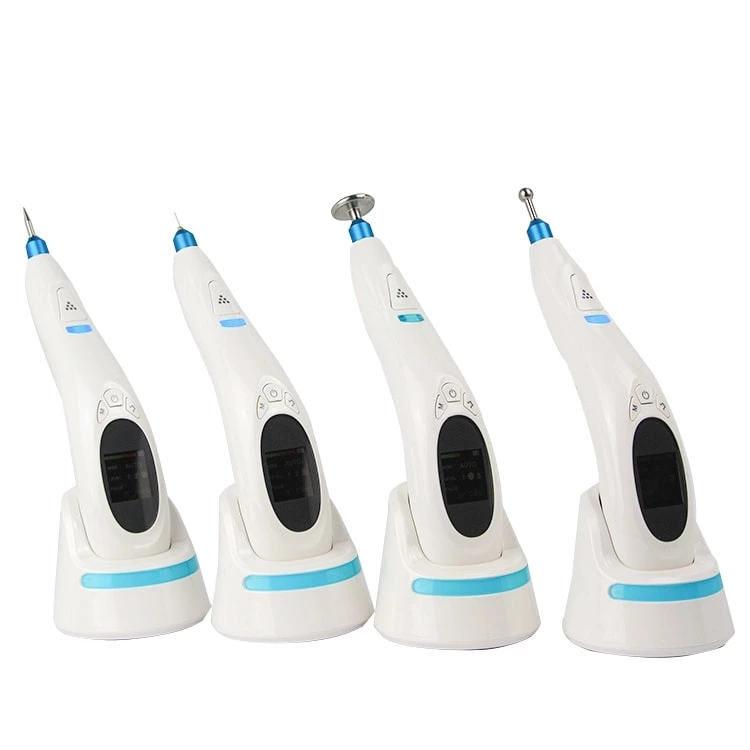Plasma Pen Fibroblast
Plasma Pen Fibroblast Treatment
Plasma pen fibroblast treatment is a technique that uses plasma energy to convert oxygen and nitrogen into plasma. By applying high-frequency current, the plasma pen stimulates the surface of the skin and creates tiny wounds. These micro-wounds stimulate the skin's self-healing mechanism, promoting the regeneration of collagen and elastin fibers, improving skin texture, reducing fine lines and wrinkles, and enhancing skin tightness and elasticity. Plasma pen fibroblast treatment offers several notable advantages. Firstly, it is non-invasive and does not require surgery or incisions. Secondly, the treatment process is simple and quick, typically taking only a few minutes to complete, with no downtime required. Additionally, the plasma pen allows for precise control over the treatment area and energy intensity, making the procedure safe and customizable. In terms of results, patients typically experience significant improvements in skin quality, including wrinkle reduction, even skin tone, and improved skin tightness and lift.
Plasma Pen Fibroblast Cost
Plasma pen fibroblast treatment stimulates the skin's self-healing mechanism by creating micro-wounds on the surface, promoting the regeneration of collagen and elastin fibers. This improves skin texture, reduces fine lines and wrinkles, and enhances skin tightness and elasticity. The treatment is non-invasive, simple, and quick, with no surgery or downtime required. Patients typically experience significant improvements in skin quality, including wrinkle reduction, even skin tone, and improved skin tightness.
The cost of plasma pen fibroblast treatment may vary due to several factors. Firstly, geographical location plays a role as beauty establishments in different areas may have varying prices based on local market conditions and cost differences. Secondly, the treatment goals and area treated can affect the cost, as different areas require varying treatment time and energy consumption. Additionally, the professionalism and reputation of the beauty establishment can also influence the price.
The cost of plasma pen fibroblast treatment should be seen as an investment rather than just a consumer expense. Patients should consider the treatment's effectiveness, duration, as well as the reputation and service of the beauty establishment, rather than just the cost itself. Lower prices do not necessarily indicate high quality, so choosing a professional beauty establishment with experienced doctors can better ensure treatment efficacy and safety.
To have a better understanding of the cost and effects of plasma pen fibroblast treatment, it is recommended for potential clients to schedule a face-to-face consultation. Professional doctors at beauty establishments can assess individual circumstances, needs, and desired goals to develop personalized treatment plans and cost estimates. This will help clients gain comprehensive knowledge about the treatment process, cost breakdown, and potential outcomes.
Plasma Pen Fibroblast Before and After
Plasma Pen Fibroblast Aftercare
To avoid sun exposure:
The skin is sensitive to sunlight after the treatment, so it is important to avoid direct sunlight for at least two weeks. If you must go outside, wear a wide-brimmed hat or use sunscreen for protection. This will help reduce discomfort and the risk of pigmentation.
Follow a gentle cleansing routine:
Tiny scabs may form in the treated area, and on the second day after the treatment, you can start gently cleansing your face with warm water. Avoid using products that are irritating or have large exfoliating particles. Throughout the healing process, avoid rubbing or scratching the skin forcefully.
Keep the skin moisturized:
The skin may feel dry and tight after the treatment. To keep the skin moisturized, it is recommended to use a mild and non-irritating moisturizer or lotion. Avoid products that contain alcohol or fragrances to prevent excessive skin irritation.
Avoid spicy and stimulating foods:
During the healing period, avoid consuming spicy foods and alcohol, as they may worsen skin discomfort and affect the healing process.
Avoid wearing makeup:
Avoid using makeup on the treated area, especially before scabs have fallen off. If you need to use makeup, choose lightweight and water-based products, and make sure to thoroughly cleanse the skin before applying.
Follow doctor's advice:
Everyone's skin condition and healing speed are different, so it is important to follow the guidance and advice of your doctor. If you experience any discomfort or have any questions, contact your doctor promptly.
Avoid strenuous exercise:
During the first two weeks after the treatment, avoid intense physical activities and facial expressions. This will help reduce tension and discomfort in the treated area.



